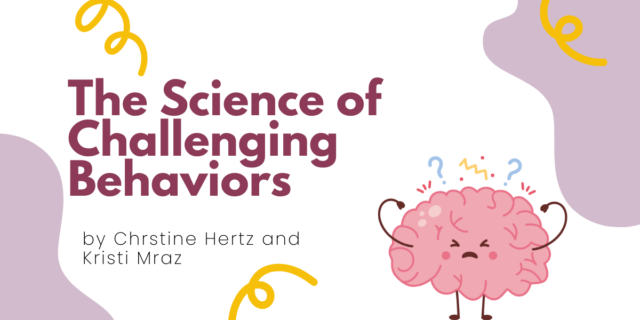
As Christine Hertz and Kristi Mraz say, the classroom of your dreams starts with one big idea. From the first days of school to the last, Kids First from Day One walks you through how to put your deepest teaching beliefs into action; from building community and designing your classroom spaces; to matching instruction to students' needs, and engaging students in curriculum.
Here, take a peek at how Christine and Kristi put their belief that children are the most important people in the room to work in their classroom:
"We really want our classrooms of today to reflect the world of tomorrow."
Christine Hertz: We think about the word management, and it automatically brings to mind everybody in neat, little boxes, filing their neat, little paperwork, little cogs in the machine. As soon as you set foot into a classroom, you know that teaching and learning is a lot messier than that.
Kristi Mraz: Thank you, community members, for getting your eyes and ears back this way.
Christine Hertz: The thing about creating a classroom community versus creating a classroom management system is that the more you do upfront to create that community, the less the teacher has to be the center of it.
Kristi Mraz: I'm going to be invisible. When you're talking, you're talking to each other. You're not talking to the teacher.
Kristi Mraz: One of the components that is so critical is that of empathy. That we as teachers can truly and honestly remember what it feels like to be five, or seven, or eight, or 10, or 15. When we truly have empathy for our kids or remembering what it's like to be in that place for them, we design classrooms differently.
Christine Hertz: Once they walk in the door, the space is designed with them in mind. Nooks and crannies for little kids, spaces for older children to work on their own or in small groups, a space for all ages to gather as a whole group. And then, the space evolves over time. The more your classroom evolves with your group of children, moving furniture, putting things on the wall, the more it will feel like their community and a place they belong. That's one of those inherent needs in people, is that you want to feel like you belong somewhere, and this is your space. The more a child can feel that, the more they'll be engaged in this whole community.
Kristi Mraz: We think more carefully about how we're structuring the day, how much we're asking kids to be still versus move, how we respond to a kid shouting out on the rug.
Christine Hertz: We want our classrooms of today to really reflect the world of tomorrow.
 Christine Hertz is coauthor of the Heinemann titles Kids First from Day One and A Mindset for Learning. She finds great joy and challenge in helping all children grow as independent and engaged students. She is passionate about keeping play and creativity at the center of children's lives and curiosity and wonder at the heart of learning. Christine has taught in a wide variety of classrooms from preschool to fourth grade and as an adjunct instructor of education courses. She currently teaches in Worcester, Vermont. You can follow her on Twitter @christine_hertz or visit her web site at christinehertz.com.
Christine Hertz is coauthor of the Heinemann titles Kids First from Day One and A Mindset for Learning. She finds great joy and challenge in helping all children grow as independent and engaged students. She is passionate about keeping play and creativity at the center of children's lives and curiosity and wonder at the heart of learning. Christine has taught in a wide variety of classrooms from preschool to fourth grade and as an adjunct instructor of education courses. She currently teaches in Worcester, Vermont. You can follow her on Twitter @christine_hertz or visit her web site at christinehertz.com.
Kristine Mraz is coauthor—with Christine Hertz—of the new Kids First from Day One, which provides a practical blueprint for increasing the child-centeredness of your teaching practice. She and Christine previously teamed up for the bestselling A Mindset for Learning (coauthored with Christine Hertz), which provides practical and powerful strategies for cultivating optimism, flexibility, and empathy alongside traditional academic skills. Kristi teaches Kindergarten in the New York City Public schools. In addition to writing and teaching, she consults in schools across the country and as far away as Taiwan. She primarily supports teachers in early literacy, play, and inquiry based learning. You can follow all of her adventures on twitter @MrazKristine or on her blog kinderconfidential.wordpress.com.



